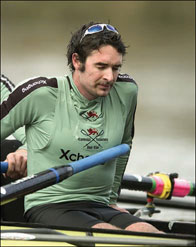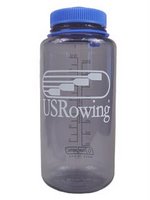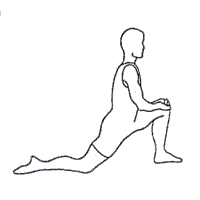
I was reading the
very interesting blog by Canadian National Team athlete and Stoke of the Cambridge University Eight, Kip McDaniel. His postings are regular and follow his feelings as he progresses through the season. It is very interesting reading.
One post on injury and illness (see
our posting on the same topic) got me thinking about training methods and volume.
Now, I'm about to stir up some differing opinions and I should state that none of this comes from McDaniel's blog. I am impressed at how a young man can move between three famous programs (Harvard, Cambridge and the Canadian Team) with such an open attitude and a desire to get everything that he can from each system. Far too many athletes experience one great coach and then spend the rest of their careers complaining that nobody else can come close. McDaniel's opinions are refreshing.
I would like this to be an open invitation to comment as opinion varies greatly on this.

McDaniel describes the immense amount of work done by the Canadian Heavies under coach Mike Spraklen, where three training sessions in a day can be considered a "light" day of training. Spraklen himself has been known to comment to his athletes that he doesn't believe that they can overtrain.

At the other end of the spectrum perhaps, but in the same camp now is the
new coach of the Canadian Lightweight men, world-renowned coach of the Danish lightweights, Bent Jensen, who is known to believe in training volumes that allow his athletes a life outside of rowing.
There is an interesting, and perhaps at least in North America, little-known posting on Concept II's UK web site. It is an erg training manual that includes an excellent section on Physiology and Sport Science as it relates to rowing training.
Do give it a read. It outlines interesting principles from the Danish system, note especially the Chapter on the "Bespoke Training plan" page 55 of the full-text PDF. The author notes that in the winter the Danish Nationals train "a total of eight to 12 hours" per week (all indoors) and when they are able to move outside "training time increases to 16 hours a week."
I wonder how the two opposing systems are working in Canada now? Are they working together and learning from each other? Is there division in the camp? Does Jensen really only row his athletes 16 hours per week? It sounds like Spraklen puts that in before Wednesday is finshed!
Certainly there are a tonne of opinions out there. Is the huge volume of training beneficial – some would say it increases the base level that the athletes can sustain aerobically and it ingrains great technique at higher intensities. Others would counter that beyond a certain point, training tired rowers can only lead to training bad technique, and can lead to the possibility of injury.
So often people cut short discussions on any topic by pointing out the results of a particular athlete or coach and suggest that any further debate - especially by someone with no similar track record - is pointless, even presumptious. OK, then we will say that Spraklen's results speak for themselves...but so do Jensen's. Now where do you take it?
When training for a six minute event is it really necessary to endure the volume of training done by Ironman triathletes?
What volume of training does a 5km runner do? Probably less. A 2 km swimmer? Probably just as much as the Canadian Heavies.
What about intensity? In Pinsent's excellent book, he describes the increase in training volume over the years, but the huge amount that is done at low intensity. The Canadian Heavies do huge volume but much of it is under racing conditions. The Danish way may be lower volume and lower intensity.
Which is better? Any opinions out there? I am only throwing out thoughts based on a great degree of hearsay - can anyone lend more insight?










 A recent publication of the Gatorade Sport Science Institute titled Can
A recent publication of the Gatorade Sport Science Institute titled Can 


